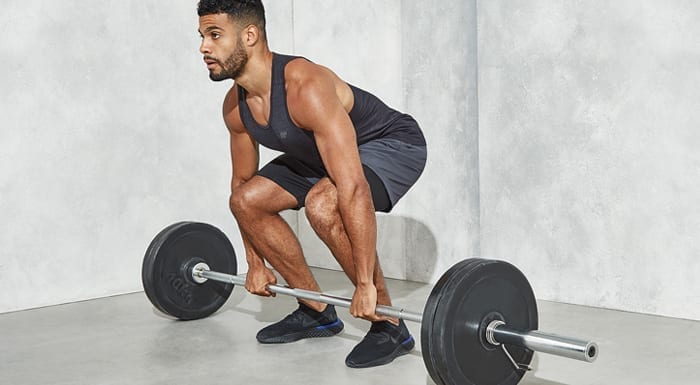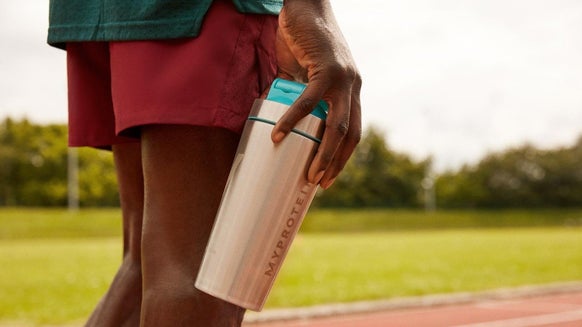Deadlift Assistance Exercises | 4 Moves For A Stronger Deadlift

Deadlifts are a compound exercise that trains the posterior chain. It involves picking a weight up from the floor, using either a conventional or sumo stance and placing it back down again. Depending on your individual levers (bone lengths and mobility), either stance can be incorporated into your routine.
The deadlift is an exercise that is like no other. It has high practicality and a functionality benefit that no other exercise can offer. In addition to functional benefits, it can also induce a lot of metabolic fatigue in the muscles of the leg, glutes, and back; thus leading to hypertrophy of those muscles.
The Best Accessory Exercises For A Strong Deadlift
In order to achieve a strong deadlift, certain accessory movements can be performed, in order to strengthen each part of the lift. For example, a strong upper back is required to prevent spinal bending.
A strong core is required in order to be able to perform deadlifts with heavy weights, etc.

1. Machine Row/Barbell Bent-Over Rows
This exercise is great for developing strength in the Latissimus Dorsi, Trapezius and Posterior Deltoids. These are all muscles that must be strong in order to maintain good posture during the deadlift.
They can be incorporated into your training program on the same day you deadlift, or in an upper-body workout, after bench pressing.
https://youtu.be/JKCNdlIoPIo
2. Stiff-Legged Deadlift
The stiff-leg deadlift allows for a load to be placed onto the hamstrings and glutes, without the great neural fatigue of regular deadlifts. Simply put, you can fatigue these muscles metabolically, without causing large amounts of fatigue to your Central Nervous System. This, in turn, will allow for greater strength gains to be made over time.
I recommend incorporating this exercise into your second Lower Body workout of the week, with squats being performed prior to them.
https://youtu.be/2Phc8-BMYXk
3. Single-Leg Leg Press
This exercise is great for building strength in the quadriceps and the glutes; two prime movers of the deadlift. Make sure to perform this exercise through a full range of motion – this may mean using lighter weights! This exercise allows for muscle imbalances to be prevented.
Single-leg leg press can be performed after deadlifting/squatting, using relatively light weights, although progression in weight should still be made each session.
https://youtu.be/HoPBzlI9sUw
4. Abdominal Crunches
A strong core is required in order to maintain spinal alignment during the deadlift. Failing to do so can lead to serious injury. Strengthening the abdominal muscles can help prevent this.
I recommend performing 3-5 sets of abdominal crunches, after a heavy squat/deadlift workout, as the core muscles will already be pre-fatigued.
https://youtu.be/UXUtkd3GW-c
Deadlift Stances
As previously mentioned, a sumo stance or a conventional stance can be used. A sumo stance involves the hands being inside of the knees, and a conventional stance involves the hands being outside of the feet.
This alteration in foot positioning will have an effect on other levers such as spinal positioning, degree of knee flexion, and degree of hip abduction, which in turn will have an effect on which muscles are recruited, and to what degree.
Considering this, both forms of deadlift still involve the same prime movers:
- The glutes
- The hamstrings
- The quadriceps
All of the above involve hip and knee extension.
Tips For A Strong Conventional Deadlift
When choosing your foot positioning a conventional deadlift, a simple rule to follow is to choose a width that you feel you would be able to jump your highest from. This will allow you to perform the deadlift in an explosive and powerful manner.

- Stand about 2-3 inches away from the bar. Before initiating the lift, take a big breath into the abdominals; bracing the core. Push your hips back as you bend down to reach the bar – this will feel a stretch in your hamstrings.
- ‘Sink’ the hips down, bringing the shins towards the bar. Externally rotate your shoulders in order to extend the thoracic spine, and recruit the Latissimus Dorsi and postural muscles.
- When pulling, make sure the bar is kept close to the body, to reduce the range of motion. Aim on pushing through your heels into the ground, and bringing your hips towards the bar in an explosive manner. When the bar is locked out, lower the bar in a controlled manner, placing the hips backwards
Tips For A Strong Sumo Deadlift

First, you must find out how wide you want your stance to be. This will come down to mobility levels of the hips, your bone lengths etc. Once you have chosen your stance, bring your hands down to the bar, keeping your arms aligned with your shoulders, and your back in a flat, neutral position.
- Take a big breath, and brace your abdominals. This will ensure that your core muscles are engaged, and you don’t place unnecessary pressure on the lumbar spine. ‘Sink’ your hips towards the bar, extend your thoracic spine by bringing your chest up, and initiate the lift.
- Externally rotate your shoulders in order to extend the thoracic spine, and recruit the latissimus dorsi and postural muscles. When pulling, concentrate on ‘spreading the floor apart’ and pushing outwards with your knees and feet. This helps engage the hips and will allow you to apply maximum force through your legs in order to push through your glutes towards the bar.
- Your core should be tight and your abdominal wall pushed up against your weightlifting belt, if you are wearing one.
Training Programs Incorporating The Deadlift
I recommend a lower-upper workout training split; repeating this twice a week. On your first lower body workout, perform 3 sets of 6 of squats, and then 2 sets of 6 of deadlifts (using your preferred stance).
The second lower body workout should consist of 4-5 sets of 8-12 reps of squats, and 3-5 sets of 6-12 reps of a deadlift variation, such as the stiff-Legged deadlift.
Accessory exercises for the deadlift can be incorporated throughout the week, into any of your workouts. This will allow for all aspects of your deadlift to gain strength.
Take Home Message
Remember, you must apply the principle of
Thanks for reading! I hope you apply some of these exercises and tips to your current workout routine.








